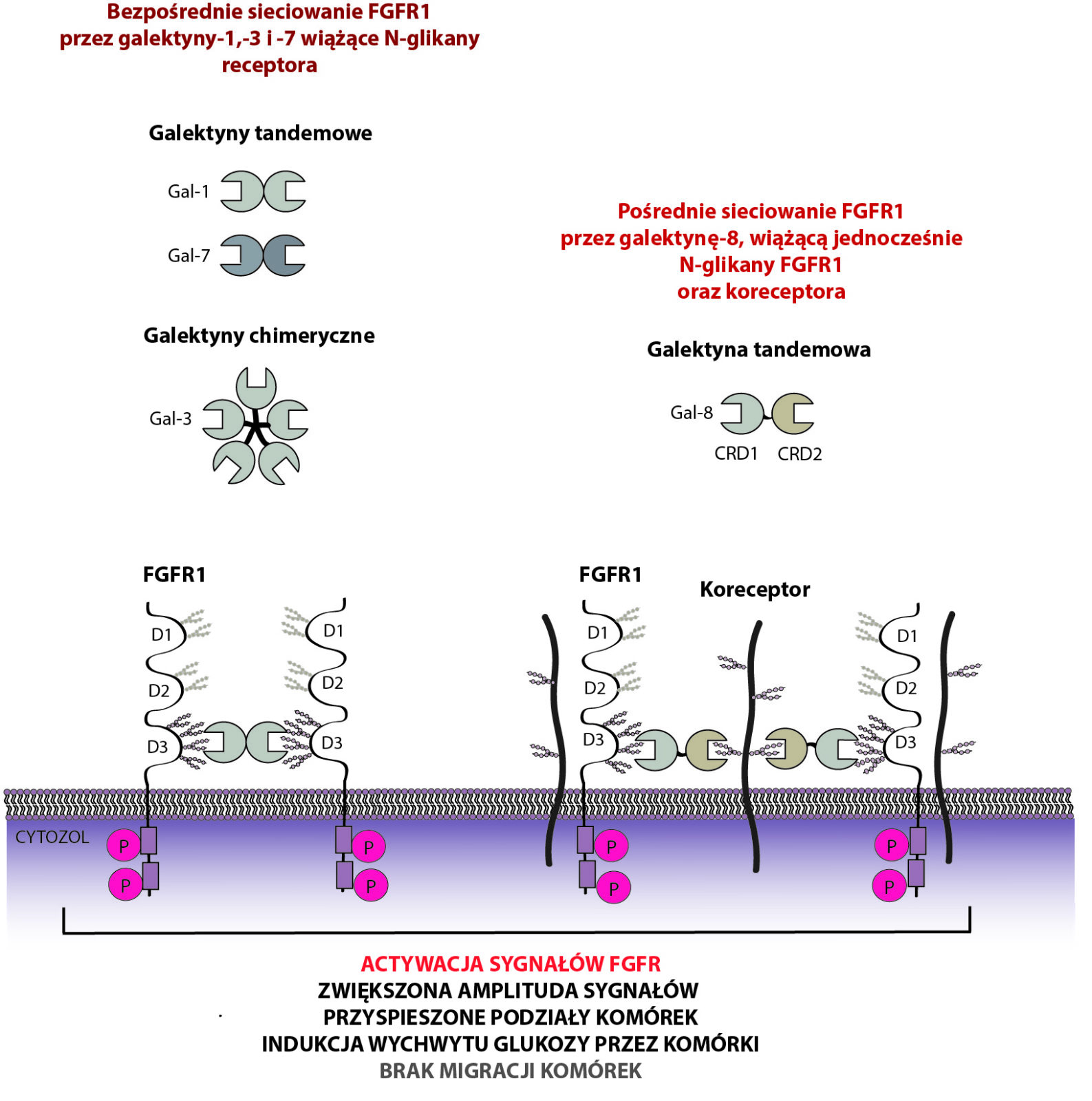
Discovery of scientists from the Department of Protein Engineering
In what way cell signalcalling is adjusted? What is the role of sugar chains attached to receptors located on the surface of the cell? Does extracellular protein who recognizes sugar chains can participate in cellular signaling? Recent discoveries of scientists from the Department of Protein Engineering published in the prestigious journal Cellular and Molecular Life Sciences contribute to better understanding of cell signaling mechanisms.
Fibroblast Growth Factor Receptors (FGFR) are usually activated by fibroblast growth factors (FGF) and participate in transmitting that control basic cellular processes, such as divisions, mobility and death. FGFR receptors are crucial for human development and proper functioning of healthy cells. Unfortunately, in several types of cancer (among others in breast, lung or ovarian cancer) hyperactivity of FGFR, which facilitates oncogenic processes is observed. FGFR proteins are in possession of attached sugar chains (known as N-glycans) in their extracellular part, but the role of these modification was largely unknown.

Scientists from the Department of Protein Engineering of the Faculty of Biotechnology led by dr hab. Łukasz Opaliński, prof. UWr have discovered new mechanism of FGFR activation, which uses N-glycans FGFR is completely independent of FGF. Scientists have shown, that specific chains of FGFR are recognized by a precise set of extracellular proteins from the family of galectines, human oligomeric proteins that recognize N-glycans. Through binding N-glycans of FGFR, galectin-1, -3, -7 i -8 are causing cross-linking of FGFR on a surface of the cell, resulting in FGFR activation and cellular signal transmission. Importantly, signals transmitted from galectines through FGFR cause other cellular effects than by FGF/FGFR pairs, primarily promoting cells division. Because galectines participate in oncogenic processes, also in types of cancers with hyperactive FGFR, a discovery of scientists from the Department of Protein Engineering can contribute to the development of new cancer treatments.
Research was carried out within the grant Sonata Bis-9 (2019/34/E/NZ3/00014) of the National Science Centre.
Publication, with mgr Dominika Żukowska as the lead author is available under the link.
Translated by Natalia Idczak (student of English Studies at the University of Wrocław) as part of the translation practice.



